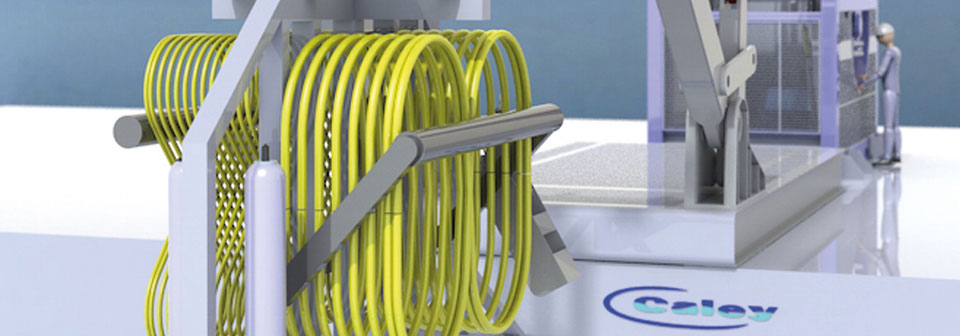
A portable Intervention Work Over Control System (IWOCS) deployment system developed by Caley Ocean Systems, has been used to successfully test the manifold functions on four deepwater subsea manifolds post installation.
The Caley IWOCS Deployment System is a self-contained portable skid comprising A-frame, umbilical reeler/power unit and deployment frame. Deployed from a vessel of opportunity, the IWOCS deployment system enabled the subsea in-situ testing and operation of all manifold mounted valves via the manifold subsea control module (SCM).
IWOCS deployment frame ready for overboarding.
Overboarded and retrieved using the IWOCS umbilical, the deployment frame provided the subsea interface for the umbilical, hydraulic flying lead and two electrical flying leads supplying electrohydraulic power and communications to each subsea manifold during testing.
“The ability to use a wide range of vessels of opportunity, and the Caley IWOCS deployment system’s integrated design and operation, brings a new level of efficiency to deepwater interventions,” says Gregor McPherson, sales director, Caley Ocean Systems.
Portable and Compact
The IWOCS Subsea Deployment Frame and Umbilical are safely handled by the dedicated A-frame and docking unit. Equipment is fully captured during in-boarding and outboarding with minimum manual intervention, and increased protection of the equipment.
The Caley IWOCS Deployment System requires less deck space, and is safer and more operationally efficient than a conventional IWOCS reeler and sheave arrangement. All operations take place within the boundary of the skid unlike a conventional IWOCS, taking up less deck space and providing a safer working environment. Once overboarded the deployment frame is guided subsea by ROV.
The IWOCS Deployment System is suitable for use in Sea State 6 conditions, enabling intervention and workover operations in a wider range of weather conditions than conventional systems.


